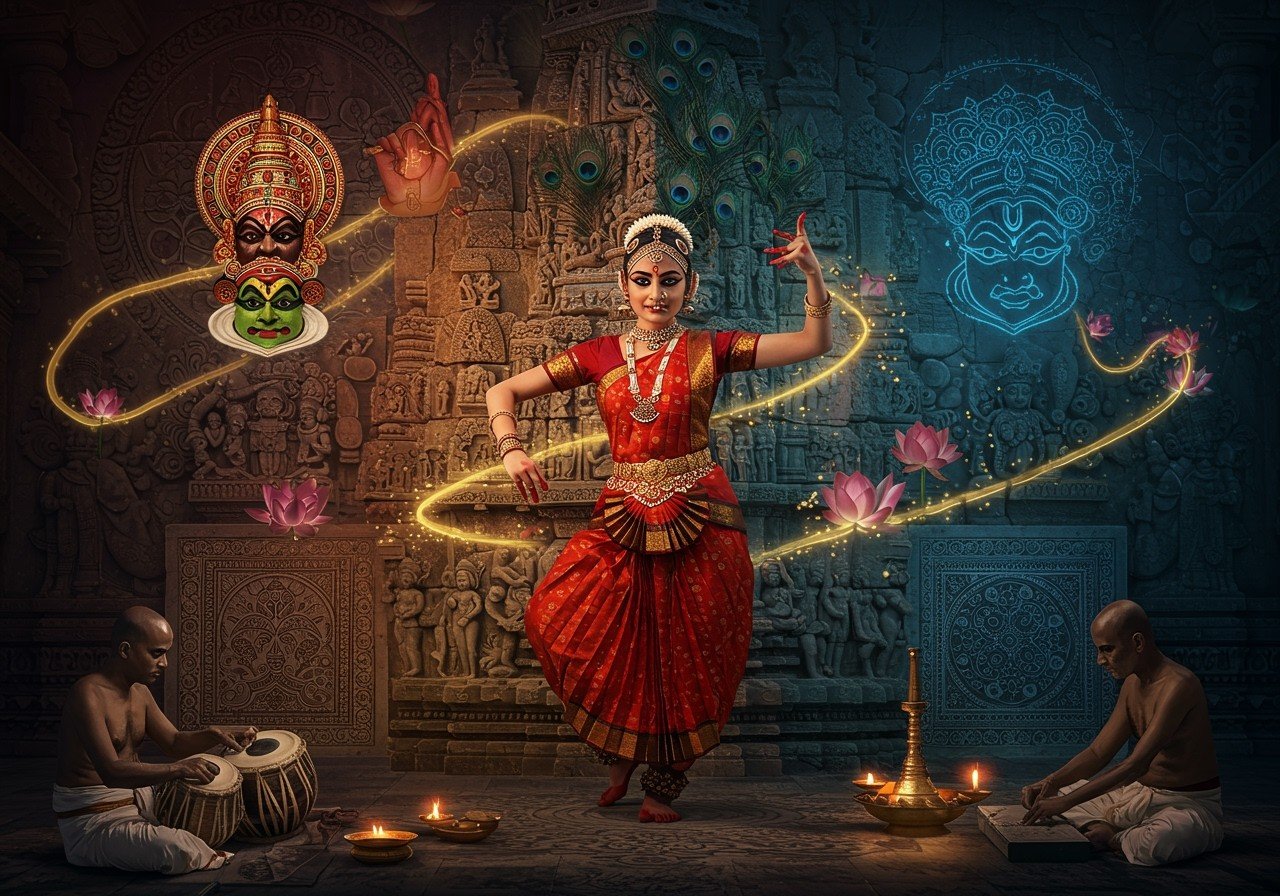
Embark on a captivating exploration of Indian art and culture, a vibrant tapestry woven with rich traditions and a fascinating history. This journey will illuminate the significance of India’s cultural heritage and its pivotal role in shaping the nation’s contemporary identity. This exploration is tailored for culturally rooted individuals, particularly those from middle to upper-middle-class backgrounds, who value tradition and appreciate the convenience of online shopping for authentic ritual items.
History of Indian Art
The evolution of Indian art has spanned millennia, encompassing a spectrum of styles and influences from ancient times to the modern era.
- Prehistoric Rock Paintings (c. 30,000 BCE – 10,000 BCE): Sites like Bhimbetka in Madhya Pradesh offer a glimpse into early human life and creativity in India, showcasing depictions of animals, hunting scenes, and daily life. These paintings provide valuable insights into the beliefs and practices of prehistoric communities.
- Indus Valley Civilization (c. 3300 BCE – 1300 BCE): This civilization, known for its advanced urban planning and intricate craftsmanship, produced remarkable sculptures, pottery, and seals. The bronze Dancing Girl statue and the intricate seal designs exemplify their artistic prowess.
- Classical Indian Art (c. 3rd Century BCE – 8th Century CE): The Maurya, Gupta, and Chola dynasties witnessed a flourishing of artistic expression. Iconic examples include the Sanchi Stupa, a magnificent Buddhist monument, and the majestic Brihadeeswarar Temple, a marvel of Dravidian architecture.
- Mughal Influence (c. 16th Century – 19th Century): The Mughal era left an indelible mark on Indian art, particularly in architecture. Structures like the Taj Mahal, a testament to eternal love, and the imposing Red Fort showcase the grandeur and intricate detailing of Mughal artistry. This period also saw the development of distinctive miniature painting styles.
- Colonial Impact (c. 18th Century – 20th Century): The British colonial period witnessed the emergence of new artistic movements, including the Bengal School of Art, which sought to revive traditional Indian artistic styles. This era also saw the rise of modern Indian artists who engaged with both Western and indigenous traditions.
- Contemporary Indian Art (c. Mid-20th Century – Present): Contemporary Indian art is a dynamic and diverse field, featuring renowned artists like M.F. Husain, known for his powerful imagery, and Anish Kapoor, celebrated for his large-scale sculptures. These artists explore a wide range of themes and mediums, reflecting the complexities of modern India.
The preservation of traditional art forms like Madhubani, Warli, and Pattachitra remains crucial for safeguarding India’s rich artistic heritage. Explore these vibrant folk traditions and discover the stories they tell. Understanding key terms like ‘miniature paintings,’ ‘folk art,’ and ‘classical art’ can deepen your appreciation of Indian art’s diverse landscape.
History of Indian Culture
Indian culture is a multifaceted and intricate tapestry, encompassing various aspects of daily life, spiritual beliefs, and social structures.
- Vedic Period (c. 1500 BCE – 500 BCE): The Vedic period laid the foundation for many aspects of Indian culture, including religious texts like the Vedas and Upanishads. This era saw the development of early philosophical and spiritual concepts that continue to influence Indian thought.
- Caste System (Ancient Origins – Present): The caste system, a complex social hierarchy, has profoundly impacted social structure and practices in India. While its influence has diminished over time, understanding its historical role is essential for comprehending Indian society.
- Major Religions: The influence of major religions like Hinduism, Buddhism, Jainism, and Sikhism has shaped Indian culture in profound ways. These religions have contributed to India’s diverse spiritual landscape, influencing its art, architecture, literature, and philosophy.
- Dynastic Contributions: Various dynasties, including the Maurya, Gupta, and Chola empires, made significant contributions to Indian art, literature, and architecture. Their patronage of the arts led to the creation of magnificent temples, sculptures, and literary works.
- Islamic Rule (c. 8th Century – 18th Century): The period of Islamic rule witnessed a fusion of Persian and Indian traditions, resulting in unique architectural styles, culinary practices, and artistic expressions. This cultural exchange enriched the Indian cultural landscape.
- Colonial Period (c. 18th Century – 1947): The British colonial period introduced Western education and ideas, leading to the rise of Indian nationalism and a re-examination of Indian identity. This period also saw the emergence of new literary and artistic movements.
- Post-Independence (1947 – Present): The post-independence era has been marked by a cultural renaissance, promoting regional diversity and celebrating India’s rich heritage. This period has seen the flourishing of Indian art, literature, and cinema on the global stage.


